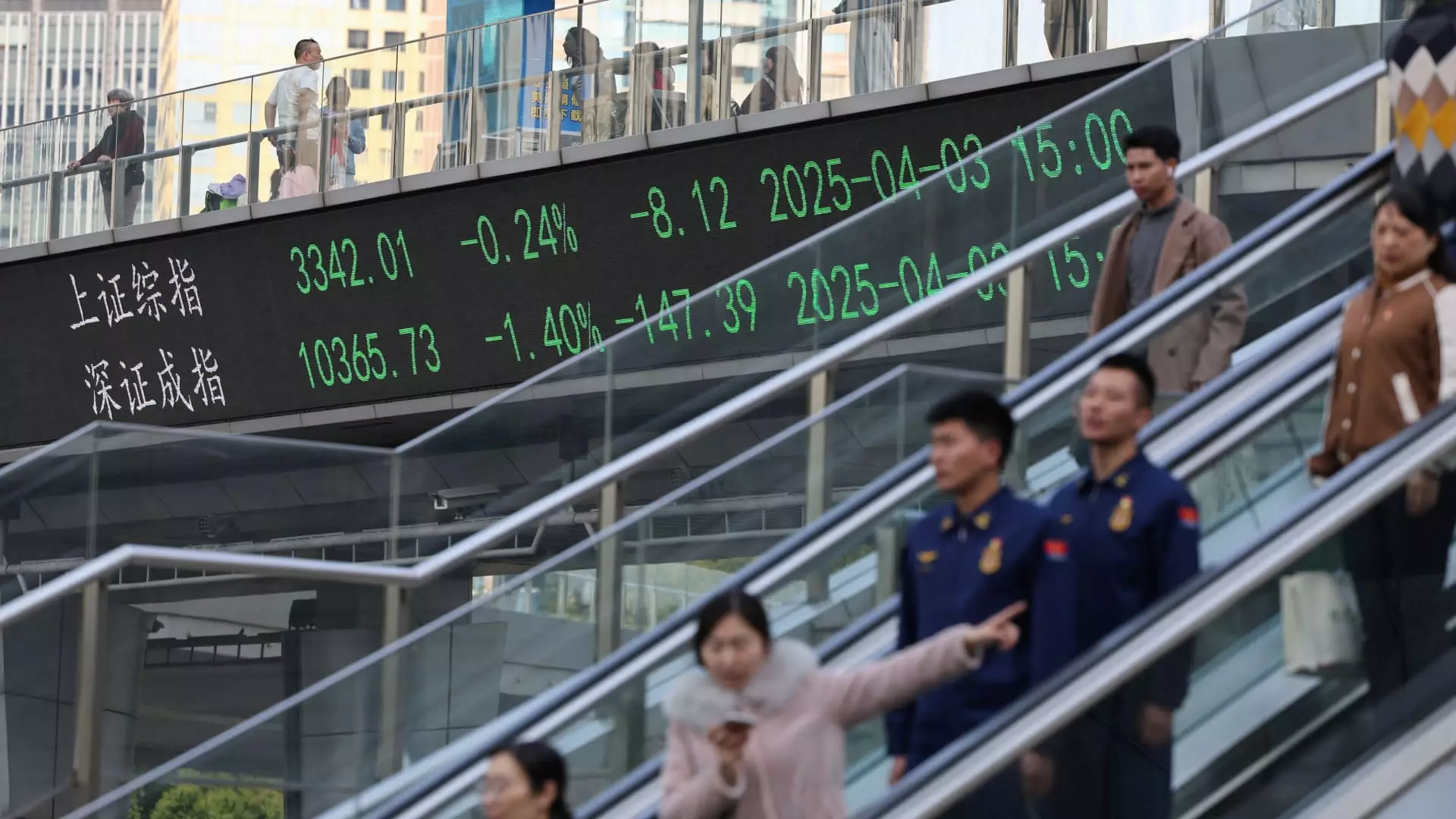The uncertainty surrounding U.S. tariffs on Chinese goods has shaken the foundations of global investment, triggering a mixture of fear and cautious optimism within the tech sector. While initial reactions sent Chinese stocks plummeting, a deeper analysis reveals a more complex narrative that underscores a unique opportunity. Instead of viewing the situation solely through the lens of adversity, investors must adapt to the new realities imposed by external pressures while recognizing the underlying resilience of China’s technology landscape. Indeed, the debacle materializes as a classic case of market overreaction, especially given the significant growth potential embedded within many Chinese tech companies. According to Kai Wang of Morningstar, these entities largely remain insulated from U.S. market fluctuations due to limited exposure, yet their trajectory may still be hindered by the broader implications of the tariff landscape.
Valuation Disparities: A Silver Lining?
Another vital aspect to consider is the striking disparity in valuations between Chinese and American tech stocks. The current situation presents a window of opportunity for savvy investors as the average price-to-earnings ratio of prominent Chinese tech firms stands a staggering 52% lower than that of the renowned “Magnificent Seven” in the U.S. Such divergence points to an essential truth: the scalability and future growth potential of China’s tech sector may far outweigh its current market valuation. The preference indicated by Citi’s strategists for domestic over export-oriented companies highlights that a shift toward local consumption and service-oriented sectors could very well be the strategic pivot that Chinese industries need amidst tightening international borders. It’s essential for investors to recognize that short-term volatility often precedes long-term gains, which makes this juncture critical for those looking for undervalued assets.
Emerging Trends in AI and Consumer Demand
The rise of generative artificial intelligence in China is rapidly redefining the tech landscape, with companies like DeepSeek already claiming successes against American counterparts like OpenAI’s ChatGPT. Even with the surrounding geopolitical tensions and government restrictions on semiconductor access, the drive for innovation has not been stifled. AI applications promise improved efficiency and reduced costs across various sectors, making firms that leverage such technologies poised for explosive growth. The implication here is that rather than being adversarial to progress, these constraints could push industries toward self-sufficiency and modernization, creating a new paradigm of domestic technology champions. With policymakers signaling support for endeavors aimed at enhancing consumer growth, the tech industry isn’t merely surviving; it’s evolving.
Healthcare: A Safe Haven for Investment
While tech stocks are often the focal point during discussions about market volatility, the Chinese healthcare sector emerges as a remarkably stable alternative during these turbulent times. Exemptions for pharmaceuticals from the latest tariff measures indicate a concerted effort to separate necessities from political maneuvering. This distinction allows Chinese biopharmaceutical firms with U.S. partnerships to navigate the treacherous waters of tariffs effectively. Analysts have pointed out that many biotechs can repurpose those tariff-induced challenges into opportunities for sustainable growth, showcasing strong operational efficiency relative to their global counterparts. The juxtaposition of a burgeoning healthcare sector amid a struggling tech landscape is an argument for diversified investing strategies that encompass both sectors’ respective strengths rather than succumbing to cyclical volatility.
Long-Term Growth Amidst Short-Term Disarray
Despite the looming uncertainties tied to U.S. tariffs and potential economic fallout, the outlook for Chinese stocks maintains a cautiously optimistic narrative. While economists like Wang warn of indirect repercussions on gross domestic product (GDP), it’s essential not to overlook the formidable capabilities of Chinese businesses to pivot and adapt. The rapid growth of technologies designed to streamline operations and enhance productivity is a positive sign for investors. It demonstrates that, much like other emerging markets, the real story may lie in how industries respond to adversity rather than the adversity itself. Therefore, deciphering the long-term trajectory in the face of adversity plays a significant role in realizing potential gains.
In an ambiance filled with anxiety and speculation, the understanding that markets aren’t merely reactive to external pressures but are also influenced by internal innovations and resilience can empower investors. As China navigates this turbulent landscape, the discerning investor must focus on the underlying strengths of individual companies and sectors, making calculated decisions that can yield dividends in an unpredictable world.


Leave a Reply